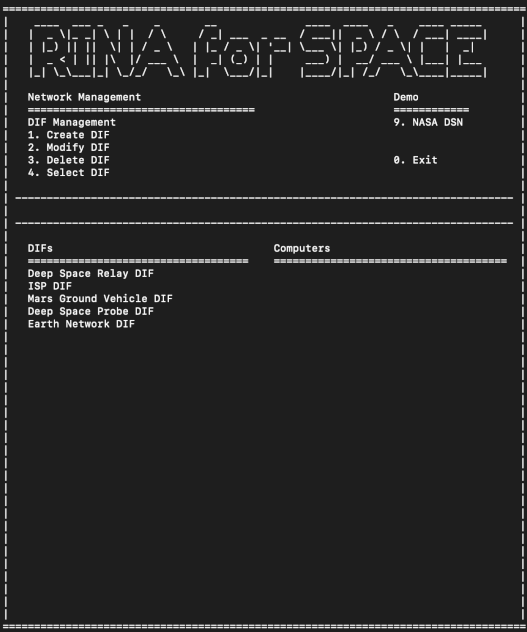
RINA for Space - Capstone
A talented group of Capstone students at Penn State Behrend built DTN on RINA in Ada, simulating a Mars rover relaying data to Earth over intermittent links, with policies handling delay and bundling.

Penn State Behrend
A talented group of Capstone students at Penn State Behrend (Glenn Anthony, Emily Kan, Hyelin Lee, Dominic Pasquarelli) took on the ambitious challenge of porting the Delay and Disruption-Tolerant Networking (DTN) protocol, commonly used in space missions, to the Recursive Internetwork Architecture (RINA) using Ada.
DTNs handle communication across disrupted or intermittently connected networks through the Bundle Protocol. This protocol encapsulates data into "bundles," enabling reliable delivery despite delays or interruptions.
On the other hand, RINA proposes replacing traditional layered protocols entirely with a single, recursive structure: the Distributed IPC Facility (DIF). DIFs clearly separate network responsibilities, like delays, routing, or caching, by defining explicit policies instead of embedding behaviors within the protocol implementations themselves. This approach leads to a cleaner, more flexible, and more scalable model.
The students quickly adopted Ada and implemented an initial RINA simulation. Their scenario involves a Mars rover transmitting data back to Earth via intermittently available satellite links, with communication windows dependent on satellite orbits and positions. Core DTN responsibilities, such as bundling (accumulated caching) and handling delays, were moved into explicit RINA policies. Their simulation successfully demonstrated effective communication from Mars to Earth across two intermittently available networks, distinct yet sharing resources with the public internet.
You can see their work here


